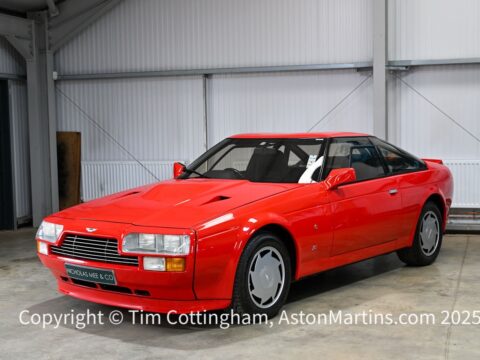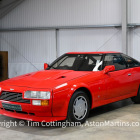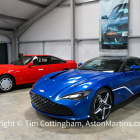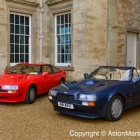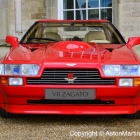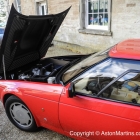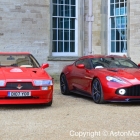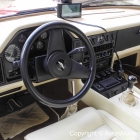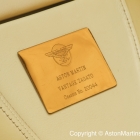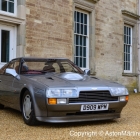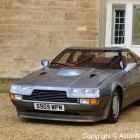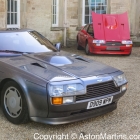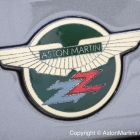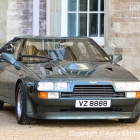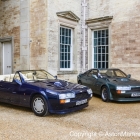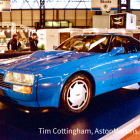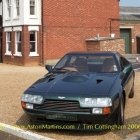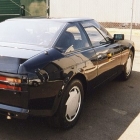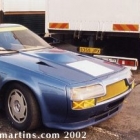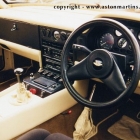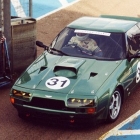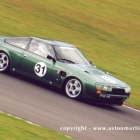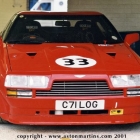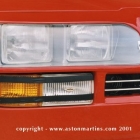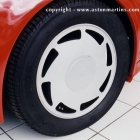The standard V8 Vantage was at the time one of, if not the fastest cars in the world; by reducing the wheelbase, loosing the rear seats, tweaking the engine and fitting a new slippery body with flush fitting glass, the Zagato became the ultimate Aston.
Unfortunately, many were not overly impressed by the final styling of the new Zagato. One of the most controversial aspects of the design was the ‘power bulge’ which was so necessary to house the airbox for the massive Weber 48 IDA carbs bored out to 50mm. Although a flat bonnet was originally intended with a fuel injection system underneath, this would probably not have produced sufficient power to achieve the promised 300 kph top speed.
The V8 Vantage Zagato was displayed at the 1986 Geneva Motor Show where three examples were shown; one on the AML stand, one on the Zagato stand, and on top of a lakeside hotel.
The interior of the Zagato was simple and modern when compared to the standard Vantage. Some of the later cars received walnut veneers to the dashboard and other cars had a 3 spoke Nardi steering wheel in place of the two spoke leather item shown here.
The dark blue metallic Zagato to the right is the same car, but 13 years later. The car now has a 7 litre R.S.Williams engine and has been converted to left hand drive.
The Vantage Zagato was never designed with racing in mind (unlike its contemporary, the Ferrari 288GTO). Only in more recent times during AMOC events have Zagatos actively competed. An here is one such car which has been extensively modified for the race track including a 7.0 litre R.S Williams fuel injected engine. The first photograph shows the car in road going form. The second picture, taken in the paddock during a 1999 AMOC meeting, shows the Zagato still in it’s original metallic blue finish with minor racing modifications. The third photograph, taken during the 2000 season shows many changes including stripped out interior, enhanced brakes with V600 style wheels, a modified air intake in the power bulge and a change of colour to Aston Racing Green. For the 2001 season, the bonnet air intake was ditched.
Performance from the 432 bhp engine fitted to the prototype car was phenomenal and even now is just about the fastest production Aston of all time. The true maximum speed of 185.8mph was achieved by the French magazine Sport Auto on an empty piece of motorway whilst the French Police were at lunch, just short of the planned 300kph. The 0 to 60mph time came up in just 4.8 seconds. Power output of the remaining production cars was pegged at around 408 bhp with the addition of power sapping emission equipment. But the factory service department could uprate them for the owners.



